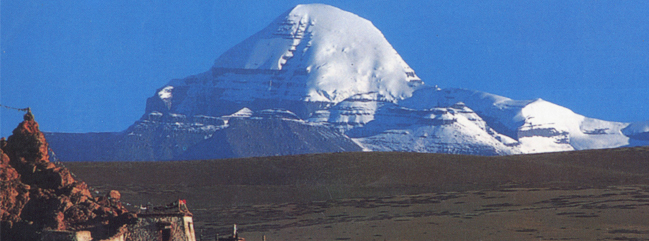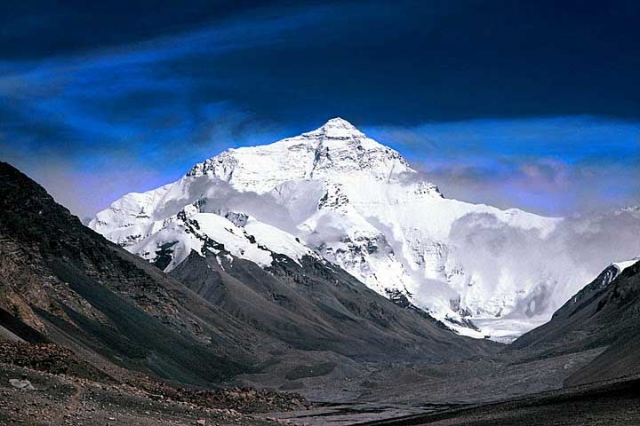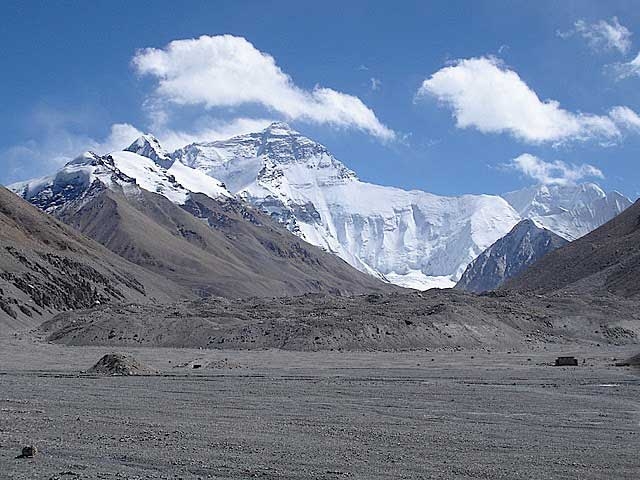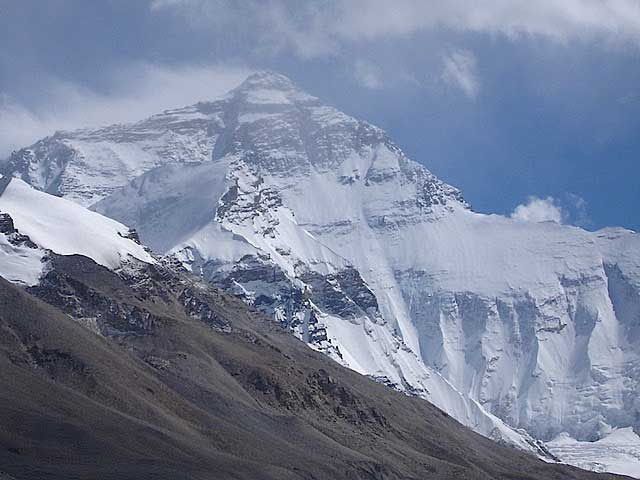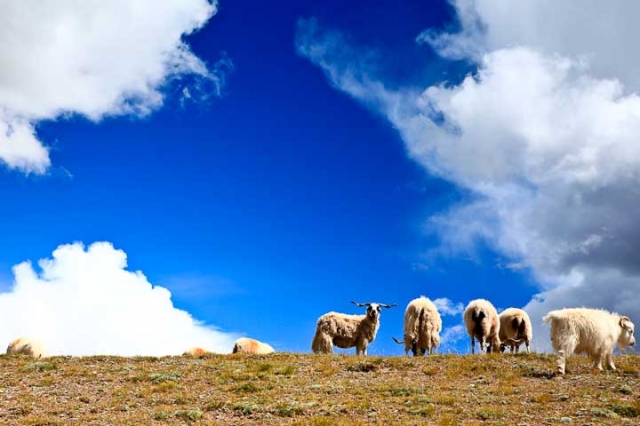Simikot to Mt. Kailash Trekking is very beautiful and holiest adventure trip in Tibet. Simikot Mount Kailash and Mansarovar Trekking tour is not only trek, there is some days by 4WD drive as well. We fly from Kathmandu – Nepalgunj – Simikot and then we start to trek on the way to Purung after that we take 4WD drive until Darchen (bottom of Mt. Kailash), then again we start our trekking trail and most part of the Lhasa we drive by 4WD and at the end we fly from Lhasa Ganggar airport to Kathmandu.
The ancient pre-Buddhist bon religion of Tibet saw mountains as power points linking heaven and earth, due to that Mt. Kailash is very holiest place for hindu religion and Mount Kailash as the soul Mountain of the kingdom of Zhang Zhung. The struggle for the hearts and minds of Tibetans between traditional Bon and modern Buddhist centered on Kailash, and the story of the contest of Magic between the Bon deity Naro Bon Chung and the Buddhist saint (Lapchi) Milarepa to decide which faction could claim the sacred mountain is still told today Legend has it that Milarepa won, but was generous enough in victory to bequeath a nearby peak to the Bon-po and agree that they might still circumambulate Mount. Kailash.
The Chinese profession of Tibet in 1951, following internal unrest and the destruction wrought on Tibetan monastic culture during the Cul. Rov resulted in the hermetic sealing of borders with India and Nepal. Ancient trading links and pilgrimage routes were instantly abolished and many remote frontier communities were oblique into economic void.
After our Mt. Kailash Trekking tour we’ll explore through this wonderful country, staying in the best traditional hotels. In the towns of Lhatse, Gyantse, Shigatse and Lhasa we explore further monasteries, Palaces and fully immerse ourselves in the Buddhists culture. In the same time we will have a chance to see the highest and biggest lake in Tibet.
Day 01. Arrive at Kathmandu Airport:
You will be met by our airport representative and transfer to hotel and a short brief about Tibet tour after refreshment.
Day 02. Sightseeing Tour in Kathmandu:
Kathmndu Valley sightseeing tour including Kathmandu durbar square, Patan durbr square, Baudhnath Stupa, Swayabhu Nath, Pashupatinath Temple and Preparation for Simikot Mt. Kailash Trekking.
Day 03. Fly from Kathmandu to Nepalgunj.
Day 04. Fly from Nepalgung to Simikot and trekking to Dharapari. Overnight at Camp (2400m) 4 hours
Day 05. Trekking from Dharapari to Kermi. Overnight at Camp (2800m) (Hot Spring visit) 5 hours
Day 06. Trekking from Kermi to Yalbang. Overnight at Camp (2900m) 5-6 hours
Day 07. Trekking from Yalbang to Tumkot. Overnight at Camp (2950m) (6-7 hours)
Day 08. Trekking from Tumkot to Thado Dhunga. Overnight at Camp (4100m) (6-7 hours)
Day 09. Explore a day in Thado Dhunga for acclamitazation
Day 10. Trekking from Thado Dhunga to over Nara Pass (4500m) and drive to Purang. (3775 m).
Day 11. Drive from Purang to Chiu monastery Manasarovar Lake. (4550m). Overnight at Camp.
Day 12. Explore a day around Mansarovar Lake. And enjoy in hot spring (if you want).Overnight at Camp.
Day 13. Drive from Mansarovar Lake to Darchen (bottom of Mt.Kailash) (4600m).
Day 14. Trekking from Darchen to Dira Phuk gompa. Overnight at Camp (5000m)
Day 15. Trekking from Dira Phuk to over Dorlma La pass (burning flam rock) [5630m] Camp at Khando Shanglham.
Day 16. Trekking from Khando Shanglham to Darchen and then drive to Ngari Phuntshom (4500m). Overnight at Camp
Day 17. Drive from Ngari to Saga.
Day 18. Drive from Saga to Lhatse.
Day 19. Drive from Lhatse to Shigatse (3900M).
Day 20. Drive from Shigatse to Gyantse (3950M).
Day 21. Drive from Gyantse to Lhasa (3650m).
Day 22. Shightseeing Tour in Lhasa
Day 23. Shightseeing Tour around Lhasa.
Day 24. Drive from Lhasa to Namtsho Lake.
Day 25. In the morning Explore the Namtsho Lake and drive back to Lhasa
Day 26. Drive from Lhasa to Ganggar airport and fly to Kathmandu.
NOTE: The above information is a guide and standard template of what we provide. The trek can be customized at your request to accommodate your specific requirements.
Note : On adventure trips of this type, weather, local politics, transport or a multitude of other factors beyond our control can result in a change of itinerary. It is, however, very unlikely that the itinerary would be substantially altered; if alterations are necessary the leader will decide what is the best alternative, taking into consideration the best interests of the whole group. Where a change does occur, we do everything we can to minimize its effect, but we cannot be responsible for the results of changes or delays.
Q.What type of shape do I need to be in, is this trip for me?
A. Trekking is suitable for average people who are moderately fit, thus no previous experience is required. Some physical fitness programs such as running, swimming, hiking is recommended before you embark on your journey. Persons suffering from a pre-existing medical condition or disease must seek medical advice before considering the trek. Whilst on the trek, it is common to experience some discomfort before being fully acclimatized.
To prepare for a strenuous trek you should begin training at least two to three months before your departure. As a guideline, an hour of aerobic exercise three to four times per week would be considered a minimum requirement. The best preparation is bushwalking involving relatively steep ascents and descents. If you can manage a couple of valley floor to ridgeline ascents per comfortable and able to enjoy the trek to the fullest. They are physically strong, sharp-witted and have an incredibly positive attitude towards a life that we would consider extremely tough. There is something about a trek in the Himalaya that draws you back time and time again. For keen walkers it is a paradise and even avowed non-walkers find that one foot just seems to follow the other, drawn by the appeal of what lies beyond.
Q. Will somebody come to pick me up at the Airport upon my arrival?
A. Yes, our Airport Representative will be there to greet you outside of Terminal Hall, he/she will be displaying an Kiwi Adventures Treks & Expedition sign board. Upon arrival, you will be transferred to your hotel.
Q. What sort of accommodation can I expect in Kathmandu and in trekking?
A. 11 night’s Trekking Guesthouse, 4 nights three/four star hotels in Kathmandu.
We use standard rooms from three/four star hotels in Kathmandu with breakfast included. Along the trekking routes teahouses/Lodges generally provide basic clean facilities with a mattress and a quilt or blanket. We can also offer you sleeping bags if needed (which need to return after the trip) but it is a good idea to always have your own sleeping equipment. We usually provide single and double rooms as well as the occasional dormitory. The dining room is downstairs around a fire. All food will be cooked to order in the little kitchen. You should not enter the kitchen unless asked to do so.
Q. What sort of food can I expect in trekking?
A. In trekking most teahouses (lodges) cook a delicious range of mostly vegetarian fare. Pasta, tuna bakes, noodles, potatoes, eggs, dhal bhat, bread, soups, fresh vegetables (variety depends on the season) and even some desserts like apple pies, pancakes, and some interesting attempts at custard. You will find a lot of garlic on the menu because it assists with acclimatization – eat some every day. In many larger villages you may find some meat on the menu. You can always get hot chocolate, tea, and hot lemon drinks, as well as soft drinks, and treats like chocolate and crisps.
Each day dinner and breakfast are used to take in the same lodge you spend the night. Lunch will be taken on the way to destination.
Q. What sort of transportation you use?
A. Kiwi Adventures Treks & Expedition is all about providing you with local insights as well as adventure, with that in mind, where we think you will get more out of your holiday by using different means of transport that is what we do. Using a variety of private transport is an integral part of our Himalaya tours and enhances the experience!
We use private tourist vehicles for sightseeing, city tours and pickups. Depending on the group size we use cars, minibus, van or land cruiser. These small light vehicles are more manoeuvrable and flexible enabling us to take you through the Narrow roads of Nepal. All the vehicles are usually air-conditioned unless we are travelling in cooler areas.
Q. What is the best season for this trekking?
A. Our trekking season extends from mid- September to May. From early September the monsoonal rains decrease. By end of September through to December the weather is usually stable with mild to warm days, cold nights. February, March, April, May, October, November, December are the best time to do trek.
Q. What is the weather & temperature like in trekking?
A. Weather in the mountains is notoriously difficult to predict. At night it is generally cooler the days are generally warm. Winter (January and February) will be bit colder but the days can be quite beautiful and warm if the sun is out. There will be bit of snow during the month of January, February and December. It is also important to make sure that you can stay warm and dry in just about any conditions. Expect the unexpected! The temperature could be as high as 20 deg C to -15 deg C low.
Q. Can I charge my digital camera or other batteries on my trip?
A. These facilities will be available in most of the places in your hotel reception by paying some service charges. Remember to bring your adapters!
Q. Is there any communication while we are on trekking?
A. There are telephones in some villages along the trekking routes from which you can make international calls.
Q. Can I use credit cards in the places visit in trekking?
A. In most cities yes, to some extent, however once you leave those cities behind, all you need is cash.
Q. How much additional money do I need per day?
A. In Kathmandu, you can allocate US$ 10 – 25 for a lunch / dinner. It’s all depends on your spending habits. US$7 to 10 US$ a day will be enough to buy bottles of water, chocolates and few drinks in trekking.
Q. Do I need to tip my guide and porters? How much would that be?
A. This is a difficult thing to gauge. We have seen everything from 20USD to 1000 USD per person for guides and porters. Tipping is not required, but a small way to show your guides and local porters thanks for their help. The level of the tip should reflect the level of personal involvement with your guide.
Q. Is the water OK to drink? Do I need to bring purifying tablets/filter?
A. In most places bottled water is readily available. If you wish to drink normal water, you need to use purifying aid, which you will need to bring with you.
Q. Are the Kiwi Adventures Treks & Expedition staff insured?
A. Our company insures all our trekking staff, including guide, cook, sherpa and porters.
Q. What essential documents do I need to bring with me on tour?
A. *Valid Passport – must be valid for up to 6 months after you return from your tour, keep a separate photocopy.
*Travel insurance, keep a separate photocopy
*Cash and Traveller’s Cheques, keep numbers and proof of purchase separate
*Flight tickets
*Emergency contact numbers for T/C’s, banks, insurance, family contacts.
Q. Can I add extra days to my trekking trip?
A. A hoilday should never be about making it to the final point quickly. Along your trek we can add days at your request with additional costs to cover guides, porters, accommodation and food.
Q. Do you use yaks/porters on the trek or do we carry all of our own gear?
A. Whilst on the trek, our porter will take care of your luggage. All you need to carry is your small day bag for your personal belongings like camera, water bottle, sun cream etc only.
Q. What opportunities will I have for shower along the trek?
A. In major places, we arrange guesthouse with hot shower. And in rest of the places, hotel water in bucket will be provided for shower; it would cost you extra about USD 3-4 per shower.
Q. Do you know about how many total miles the trek is?
A. Total distance of the entire trek is about 75 miles.
Cost Includes
• Airports picks up and drop by private Car/Van.
• Flight tickets from Kathmandu to Lhasa.
• Full Day sightseeing tour in Kathmandu valley including private car/van and well trained tour guide.
• Three night’s accommodation in star category hotel in Kathmandu with Bed and Breakfast.
• All the necessary documents and Tibet entry Visa.
• The entire entrance fee while you visit monuments in Tibet and Nepal.
• Tibetan English speaking guide during Tibet trekking and tour.
• Ground transportation by 4WD Land curser.
• Supported truck, if needed.
• Full board during camping trekking (overnight at camp).
• Mule and Yak or porter for carrying luggage during your trek.
• All Camping Cooking and all others necessary equipments.
• All the staffs for kitchen.
• Any special permits or documents for trekking, if required.
Cost Excludes
• Nepal entry visa fee (you may easily issue the visa upon your arrival at Tribhuwan International Airport – Kathmandu). You will require 2 passport size photos.
• Lunch & Dinner while you are in Kathmandu.
• Lunch & Dinner while you are in hotel or guest house in Tibet.
• All the alcoholic and non alcoholic Drinks (overnight at Hotel or Guest house).
• International airfare and airport departure tax.
• Emergency evacuation if needed.
• Your personal equipments.
• Excess Baggage during your trekking.
• Anything not mentioned above.
• Tips for all staffs and driver.
